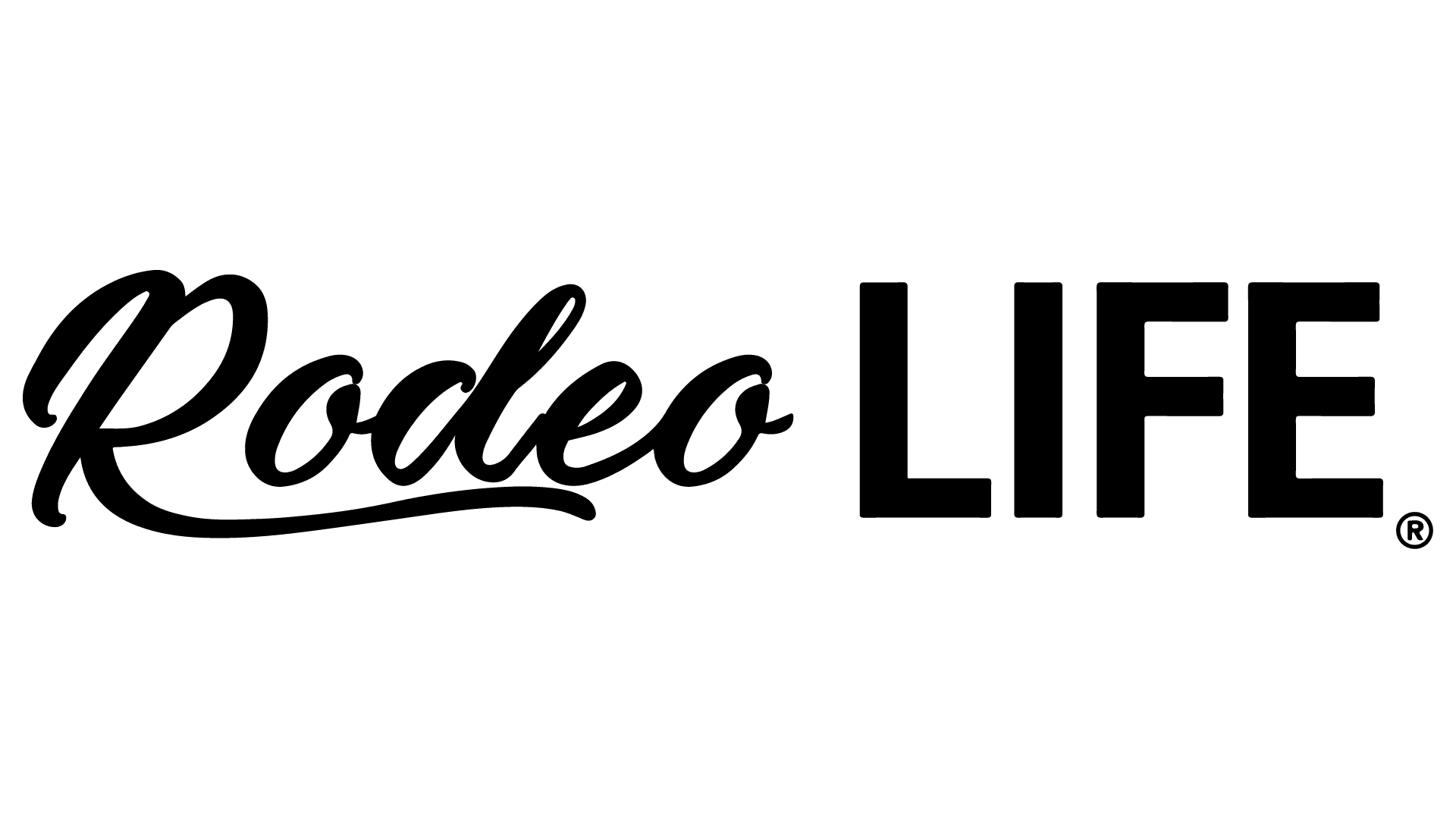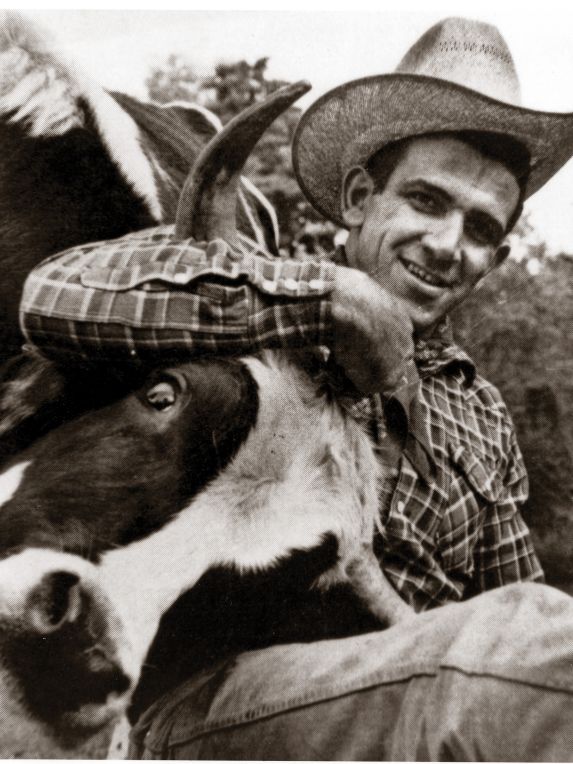Gene Dilorenzo grew up in Pelham Bay, Bronx, NY. “We had five riding stables close by and I started riding at an early age because of my dad. He was an instructor in the Calvary, so that’s how I started my life with horses and riding. I rode every day from the time I was 8 years old.” As a young boy, Gene went to Madison Square Garden in hopes of getting to meet some of the cowboys competing there. “I was one of those kids that would go down to Belevadare Hotel and hang out there. I would try to get a contestant to give me a pass to see the rodeo.” There were no schools when Gene started and nobody wanted to give much information. “They didn’t want you beating them,” said Gene, who resides in Spring Valley, New York. “I got my start by joining the Wild West rodeos. There were three producers in New Jersey – Jackie Westcott, Westcott rodeos, Buddy Baldwin and Circle K. Tillie Baldwin, from Norway, won the ladies bronc riding in Oregon. At the Wild West shows they paid $5 a head for any stock you got on. Madison Square Garden used to give me $20 to get on the rank horses. One evening I rode one of their best horses – El Capitan. I also set up and tore down the rodeo arenas, from putting the spikes in the ground, to stretching the wire.” When Gene started steer wrestling, the horses weren’t trained like they are today and the steers weighed from 750 pounds up. He was able to put his mind and body into it with the help of his background as an amateur fighter. “At the riding stables we had quite a few professional Italian fighters – including Tony Canzoneri (three-time world champion) – and they helped teach me boxing skills and how to punch effectiveley. In my first Golden Glove fight I was shocked with the first punch I threw I knocked my opponent down for the count. Gene was drafted in 1953 and volunteered for the 82nd Airborne and spent two years in the service, stationed at Ft. Bragg, NC. “At a rodeo I ruptured my liver from a bull and my father wanted me to quit rodeo. I didn’t rodeo for four years.” In 1957, a friend of his asked him to go to Cowtown, NJ, where there were televised rodeo and quite a bit of added money per event. He found some good bull dogging horses to steer wrestle off of and won $550 in one day in 1957. “From then on I was hooked. I rodeod with a changed name – you couldn’t be RCA and amateur – so I changed my name to Gene Newman because he had an RCA card and I could use it.”
Gene fell in love with Janet in 1957 was engaged the following year. “I went to some rodeos during the Syracuse State Fair and I won $1,200 and bought my wife a two carat diamond with the money.” They were married in Pleasantville, NY, in 1959. He continued to rodeo, and built a practice arena in the Bronx on rented property from the railroad. We roped and bull dogged right there. I knew a rodeo producer who would let me practice on some of his good bucking horses.”
His traveling partner, Jack Meli, who now lives in St. Cloud Forida, and Gene did everything they could think of to earn money on the road. Together they purchased $10,000 worth of Wrangler jeans to sell at the rodeos. “We’d sell four pair for $20 out of the trunk of the car.”
When Gene started on the rodeo road, he loved traveling and camping on the grounds. He would stay at the same rodeo for a week – six performances, three head a day. “Everybody spent the week together. At that time, Waverly, NY, was the rodeo capital of the East, and the producer was Colonel Jim Eskew. After my experience in the cook tent, I told myself I better learn how to win because the cook would buy his whiskey first and buy the food after that.”
He and Jack were responsible for starting the first bull dogging schools on the east coast (Dover, N.J.) in 1967. “We would fill up,” he said. “We would have anywhere from 20-25 students.” He put on the schools until 1970.
Gene’s life changed when he turned 40. “I had to change positions in life. I felt I didn’t want to rodeo past then. I had four young children (Eugene, Christopher, Lisa, and Janine) and I wanted to send them all off to good schools so I thought I had to earn some serious money at my business.” When he got out of the military, he started in the display business. He concentrated on window displays for liquor, wine, and beer industry. He gets his creativity from his family. “My father was a show card writer, a painter, and a very creative person. My grandfather was political cartoonist.” He decided to branch out of the display business and get into the manufacturing part of it. “The wine boom came and I thought I was the wine rack king, I had patents on the racks. I developed a whole line of promotional bar accessories. If you’re creative you have to adapt to the situation. I should have been out of business a dozen times. I hitchhiked through the various ups and downs in the economy. It’s a creative business so it’s endless. It’s an exciting place to be because it is very technical. We are creative design manufacturers. We make point of sale displays. I could do anything for anyone, but we’re in the liquor industry.” At 82, Gene has built 7 companies, including a real estate business.
Their sons are running the business, along with a partner, and Gene goes in two or three days a week to check the cash position. “I take care of my little ranch, go to work, and head to the Caribbean for the winter. We have a place in the Dominican Republic – it’s nice and warm, we are right in front of the beach.” Gene enjoys riding in the mountains of the Harriman State Park, close to his home in New York. “I have 130,000 acres of parkland. In five years, I’ve only seen five riders.”
Gene is proud of his rodeo background. It taught him to be competitive and have staying power. “It’s not always peaches and cream – rodeo taught me how to set my standards and achieve my goals. When I got into the injection molding business, they told me I needed one good tool to be successful and I had one. It makes me think of the rodeo business, when a cowboy only needs one good horse to win.”
In December of 1969, Sports Illustrated did an article on the Effette East. It was about Cowtown, New Jersey, and its rodeo contestants. It ended with: when the coffee pot is empty and the campfire is out, a rodeo cowboy will always be there.
Gene DiLorenzo
63
previous post









